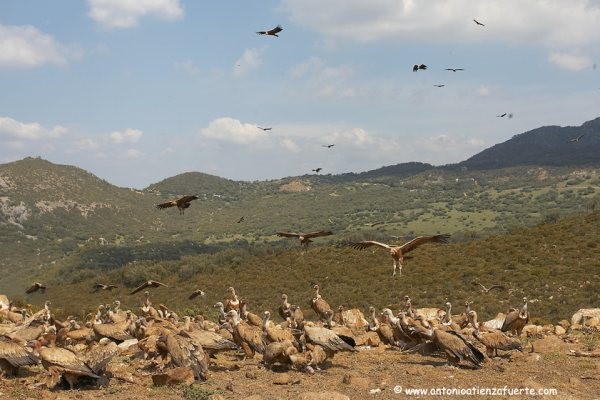Recent studies had confirmed that avian scavengers living in the north of Spain had a higher mortality rate than those living in the south. The main difference was that the northern areas where they lived had higher human intervention and dense population compared to the southern areas. Now, a study led by the Doñana Biological Station (EBD-CSIC), along with five research institutes and universities, has identified which physiological traits may cause this high mortality.
The researchers have compared the health of two populations of griffon vultures (Gyps fulvus), one of the main ecosystem services providers. This work is based on an ecophysiological approach that includes information generated by GPS devices revealing the movements of 65 adult individuals tagged in the Ebro valley and the Sierra de Cazorla in Andalusia.
The study has clarified how the social context, enviromental characteristics and individual traits affect the stress level and cell aging of the vultures of these two populations. "This is a novel work because it addresses the individual response of long-lived birds to the environment from a physiological perspective, something that has been practically unexplored until now. Besides, it can be very useful for future management and decision-making", says José Antonio Donázar, researcher at the EBD-CSIC.
Vultures from the northern region exploit more anthropized areas that gather a higher density of conspecifics, which usually find food in intensive livestock farms and landfills. "This is a source of high hormonal markes of chronic stress, especially in the shorter telomeres", explains Laura Gangoso, lead author of the investigation, postdoctoral researcher at EBD-CSIC and Professor-Researcher at the Universidad Complutense de Madrid. "This study demonstrates the importance of telomeres as good biological indicators of the quality of the environment in which individuals live, since they reflect the cumulative effects of the environment on individual condition and quality".
Ainara Cortés-Avizanda, postdoctoral researcher associated with the Animal Ecology and Demography Group of the Mediterranean Institute for Advanced Studies (UIB-CSIC), highlights that "these results show that living in highly humanized areas has hidden costs, not easily detectable, for large vultures". These conclusions are added to previous results obtained by this team that showed lower survival rate of individuals who exploited more anthropized areas. "This progressive sum of layers of knowledge casts shadows on the future of scavenger populations in a world increasingly transformed by human activities", concludes Ainara Cortés-Avizanda.
Reference
Gangoso et al 2021. Avian scavengers living in anthropized landscapes have shorter telomeres and higher levels of glucocorticoid hormones. STOTEN. DOI: https://doi.org/10.1016/j.scitotenv.2021.146920









 Las altas temperaturas están provocando que las lagunas y las marismas de Doñana pierdan agua rápidamente
Las altas temperaturas están provocando que las lagunas y las marismas de Doñana pierdan agua rápidamente



